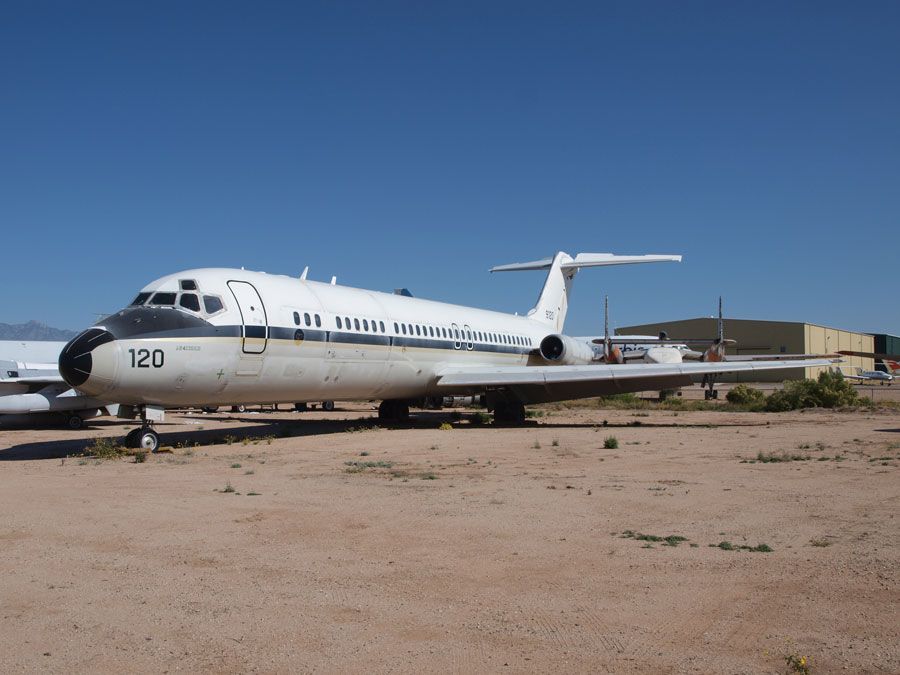Douglas C-9B
Douglas C-9B Skytrain II
One of the most successful twin-engine jet airliners ever the Douglas DC-9 was in continuous production from 1965 to 2006. Over time the design evolved considerably, growing steadily longer and with increasing wingspans. The DC-9 and its descendants the MD-80 and MD-90 have been so popular that they survived the demise of McDonnell-Douglas and reemerged as the Boeing 717 in the late 1990s. The U.S. Air Force adopted the DC-9 as the C-9A Nightingale in 1967 for use as a medical evacuation aircraft. The Air Force also adopted the VC-9C as a VIP transport. The U.S. Navy adopted the C-9B for general cargo and personnel transport duties.
| Wingspan | 93 ft 5in. |
Wingspan |
| Length | 119 ft 5 in. |
Length |
| Height | 27 ft 6 in. |
Height |
| Weight | 114,000 lbs (loaded) |
Weight |
| Max. Speed | 575 MPH |
Maximum Speed |
| Service Ceiling | 37,000 ft |
Service Ceiling |
| Range | 2,070 miles |
Range |
| Engines | Two Pratt & Whitney JT8D-9A Turbofans with 14,500 pounds of thrust each |
Engines |
| Crew | 2 pilots and up to 4 cabin attendants |
Crew |
Manufacturer
Douglas
Markings
U.S. Navy Fleet Logistics Support Squadron 56 (VR-56), Naval Air Station Oceana, Virginia
Serial Number
159120
Designation
C-9B
